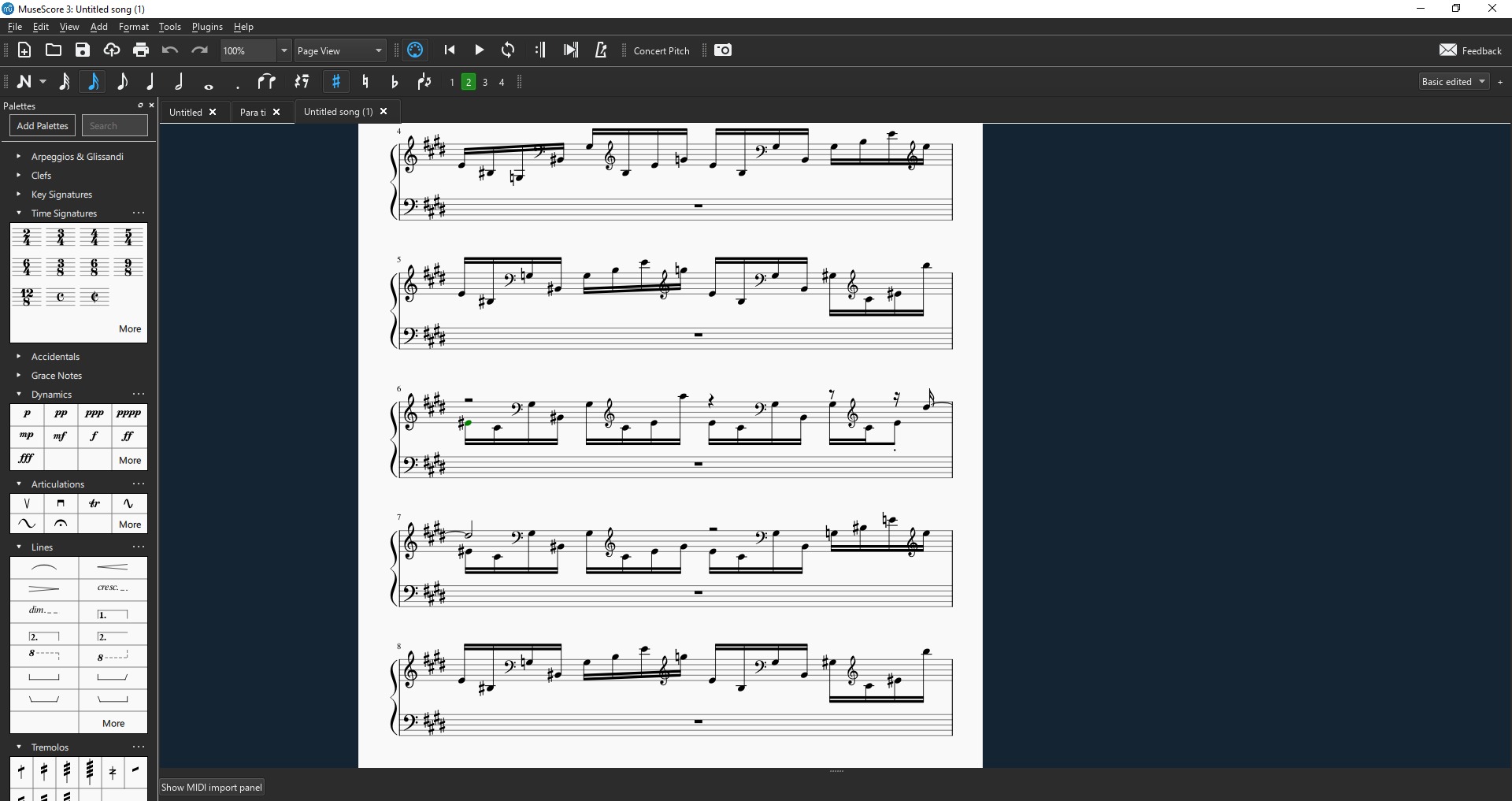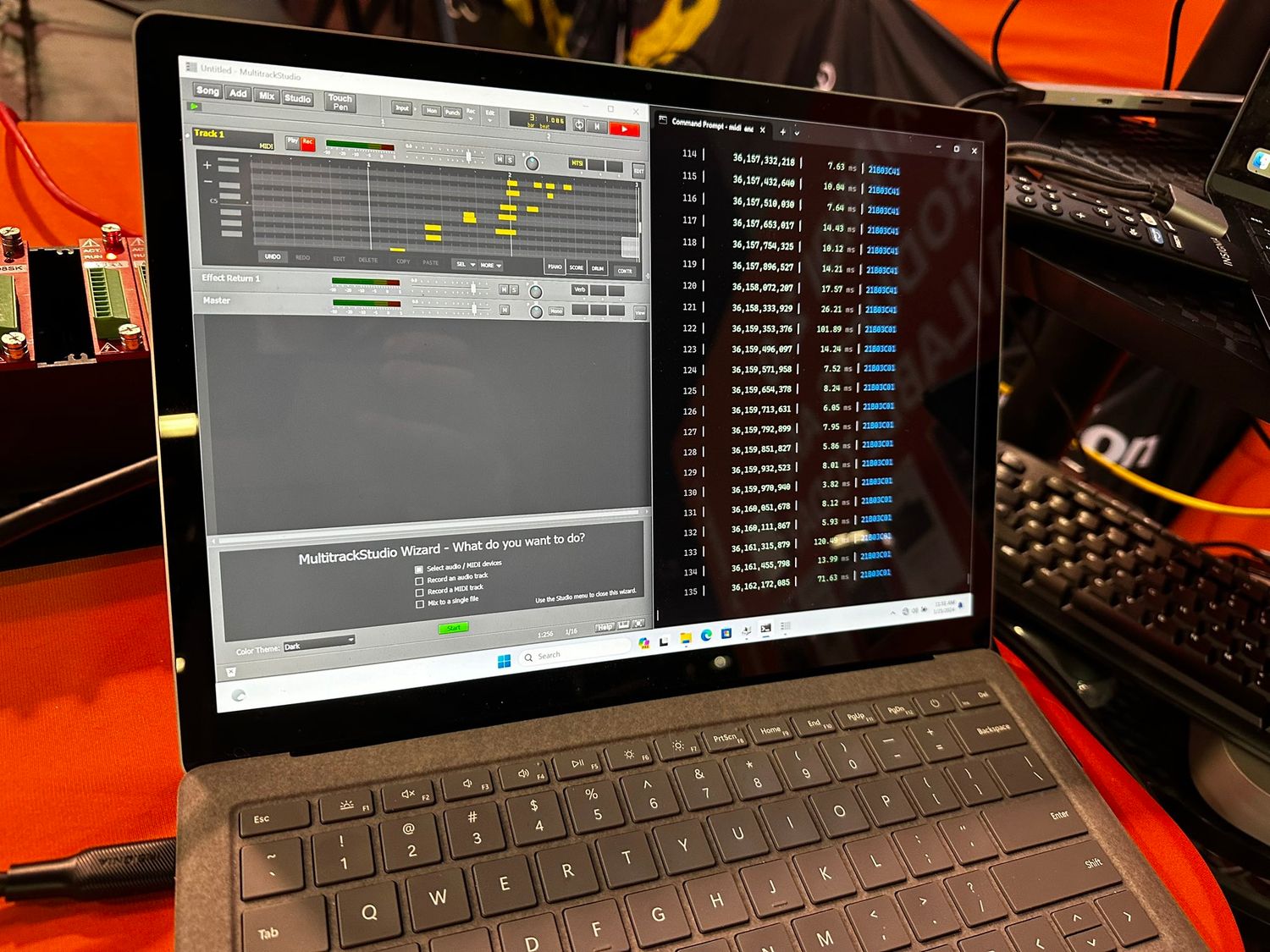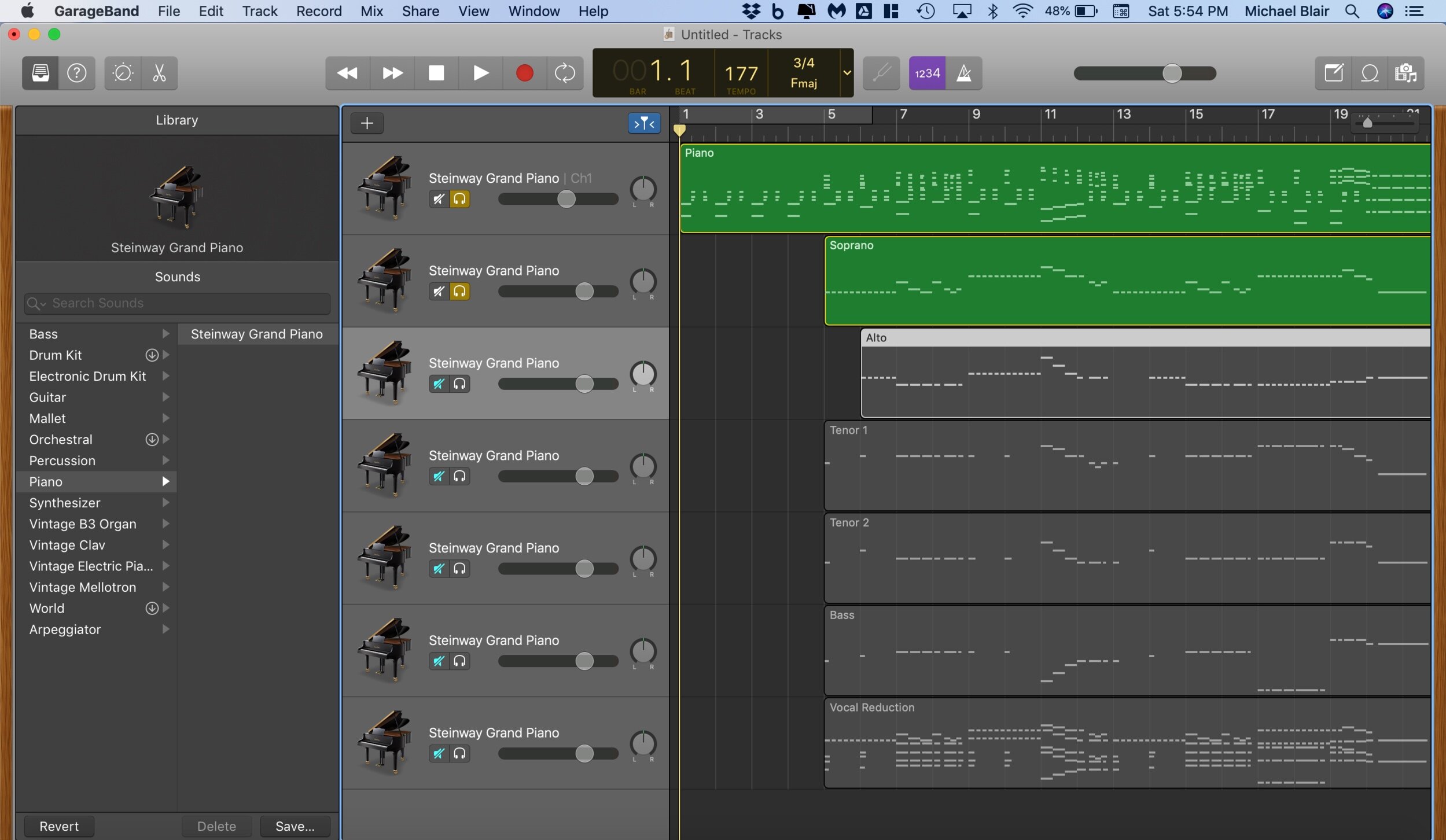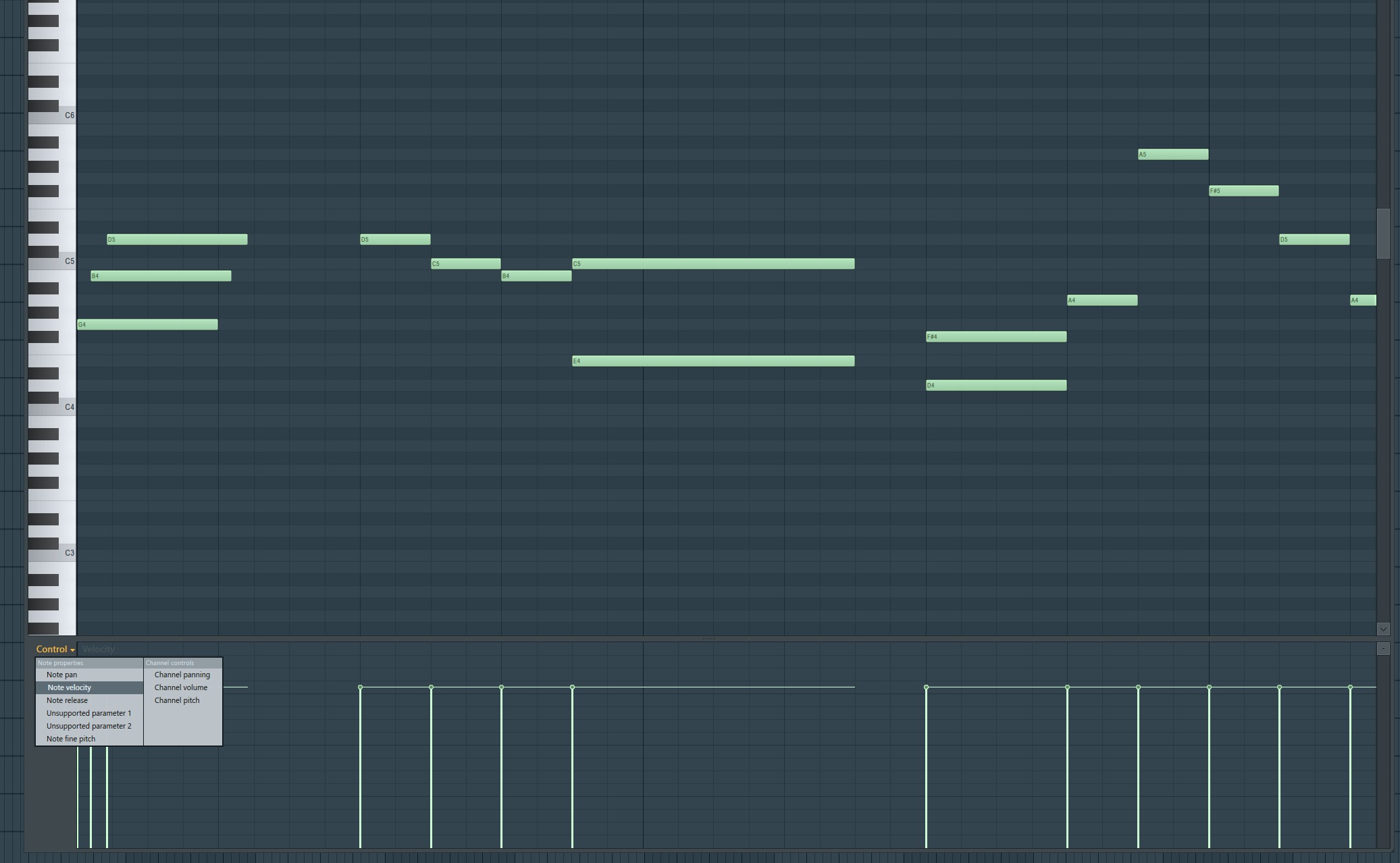Home>Production & Technology>MIDI>How MIDI Files Work
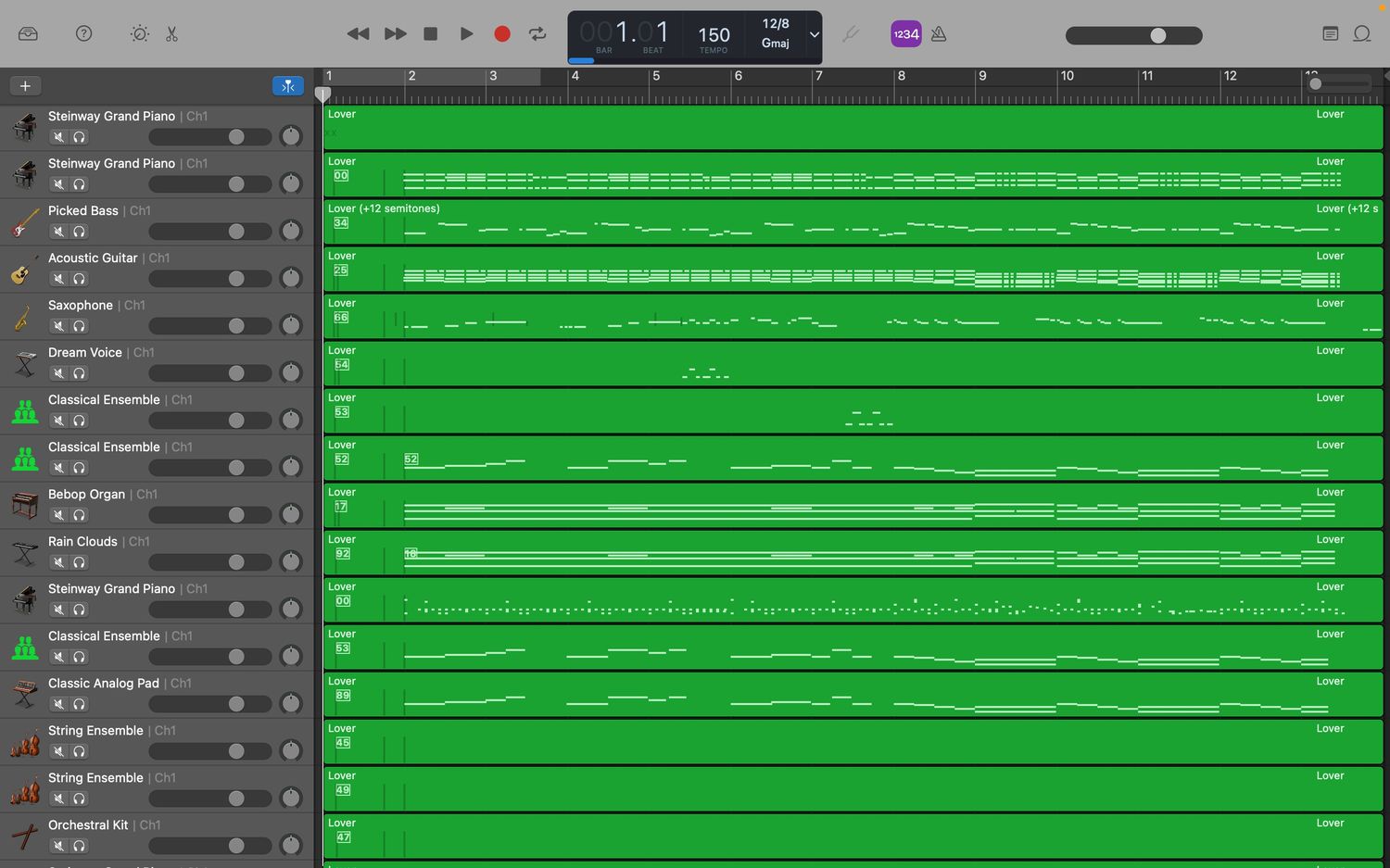

MIDI
How MIDI Files Work
Published: February 22, 2024
Learn how MIDI files work and their role in digital music production. Explore the technical aspects and creative potential of MIDI technology.
(Many of the links in this article redirect to a specific reviewed product. Your purchase of these products through affiliate links helps to generate commission for AudioLover.com, at no extra cost. Learn more)
Table of Contents
What is a MIDI File?
A MIDI (Musical Instrument Digital Interface) file is a versatile and widely used format for storing musical data. Unlike audio files, which capture sound waves, MIDI files contain instructions and data that control how music is produced. Think of it as a set of musical instructions that can be interpreted and played by various electronic instruments and software.
MIDI files are like musical sheet music in a digital form. They don't contain actual audio recordings, but rather a series of commands that tell devices how to generate sound. These commands include information about which notes to play, their duration, pitch, volume, and even the type of instrument to use.
One of the most fascinating aspects of MIDI files is their ability to be edited and manipulated with ease. Since they don't contain actual audio, you can modify individual notes, change instruments, adjust tempo, and make other alterations without degrading the sound quality. This flexibility makes MIDI files invaluable in music production, allowing for endless creativity and experimentation.
In essence, MIDI files serve as a universal language for musical devices. They enable different instruments, such as keyboards, synthesizers, and drum machines, to communicate and synchronize with each other. This interoperability is what makes MIDI such a powerful tool for musicians and producers, as it allows for seamless integration of various hardware and software components in a music setup.
Moreover, MIDI files have a relatively small file size compared to audio files, making them ideal for sharing and distributing musical compositions over the internet. This efficiency in storage and transmission has contributed to the widespread use of MIDI files in various applications, from creating backing tracks for live performances to composing complex orchestral arrangements in digital audio workstations.
In summary, MIDI files are the digital backbone of modern music production. They provide a standardized format for encoding musical information, offer unparalleled flexibility for editing and manipulation, and facilitate seamless communication between musical devices. Understanding the role of MIDI files is crucial for anyone delving into the realm of music creation and production.
How MIDI Files Store Musical Data
MIDI files store musical data in a unique and efficient manner, allowing for the precise representation of musical elements in a digital format. At the core of MIDI file storage is the abstraction of musical information into a series of commands and parameters that define the nuances of a musical composition.
When a musician plays a MIDI-compatible instrument or inputs musical data into a software application, such as a digital audio workstation (DAW), the actions are translated into MIDI messages. These messages encompass a wide range of musical attributes, including note-on and note-off commands, pitch bend, modulation, velocity, and control changes. Each of these commands is encoded with specific values that capture the subtleties of the musical performance.
Furthermore, MIDI files store musical data in a structured and organized manner. They consist of tracks, which can be thought of as individual layers of musical information. Each track contains a sequence of MIDI events that correspond to the actions performed during the creation of the music. These events encompass everything from the initiation of a note to the application of effects and changes in musical parameters.
Additionally, MIDI files utilize a time-based approach to store musical data. Each MIDI event is associated with a precise timing value, indicating when it should occur in relation to the overall musical timeline. This temporal precision allows for accurate playback and synchronization of musical elements across different devices and software applications.
Moreover, MIDI files employ a system of musical notation known as "piano roll" representation. In this format, the musical data is visualized as a grid, with time progressing horizontally and pitch ascending vertically. Each MIDI event is positioned within this grid, providing a graphical representation of the musical composition. This visual approach to storing musical data enables easy editing and manipulation, as musicians and producers can directly interact with the MIDI information in a user-friendly interface.
In essence, MIDI files store musical data with a focus on precision, organization, and visual representation. By encapsulating musical actions into a series of commands and parameters, MIDI files provide a versatile and efficient means of capturing, storing, and manipulating musical information. Understanding the intricacies of how MIDI files store musical data is fundamental to harnessing the full potential of this powerful musical format.
MIDI File Format and Structure
MIDI files adhere to a specific format and structure that govern how musical data is organized and represented. Understanding the intricacies of this format is essential for comprehending the inner workings of MIDI files and leveraging their capabilities in music production and performance.
At its core, the MIDI file format is based on a standardized protocol that defines how musical information is encoded and stored. This protocol ensures interoperability among different MIDI-compatible devices and software applications, allowing for seamless communication and playback of musical data.
The structure of a MIDI file consists of several key elements, each serving a distinct purpose in encapsulating musical content. These elements include header chunk, track chunks, and MIDI events.
The header chunk provides essential information about the MIDI file, such as the timing resolution, number of tracks, and format type. This metadata is crucial for correctly interpreting and playing back the musical content contained within the MIDI file.
Track chunks represent the individual layers of musical data within a MIDI file. Each track contains a sequence of MIDI events that correspond to specific musical actions, such as note-on and note-off commands, control changes, and tempo variations. The presence of multiple tracks allows for the simultaneous representation of different musical elements, enabling the creation of complex and multi-layered compositions.
MIDI events form the building blocks of musical data within a MIDI file. These events encompass a wide range of commands and parameters, including note information, velocity, pitch bend, and modulation. Each MIDI event is associated with a precise timing value, indicating when it should occur in relation to the overall musical timeline. This temporal precision is fundamental for accurate playback and synchronization of musical elements.
Furthermore, the MIDI file format employs a binary structure, wherein musical information is represented using a series of bytes. This compact and efficient encoding scheme ensures that MIDI files have a relatively small file size, making them ideal for storage, transmission, and sharing of musical compositions.
In summary, the MIDI file format and structure are designed to encapsulate musical data in a standardized and organized manner. By incorporating header chunks, track chunks, and MIDI events, MIDI files provide a comprehensive framework for representing musical content with precision and efficiency. Mastery of the MIDI file format and structure is paramount for harnessing the full potential of MIDI files in music production and performance.
How MIDI Files are Used in Music Production
MIDI files play a pivotal role in modern music production, serving as a fundamental tool for composers, producers, and musicians alike. Their versatility and flexibility make them indispensable in various stages of the music creation process.
One of the primary ways MIDI files are utilized in music production is in the composition and arrangement phase. Composers and songwriters often start by creating MIDI-based sketches of their musical ideas. This involves inputting musical notes, melodies, and chord progressions into a MIDI sequencer or digital audio workstation (DAW). Since MIDI files store musical information in a format that is easily editable, composers can effortlessly modify and refine their compositions, experimenting with different arrangements, instrumentations, and musical structures. This iterative process allows for the exploration of diverse musical possibilities without the constraints of fixed audio recordings.
Furthermore, MIDI files are extensively used in the realm of virtual instruments and software synthesizers. Many music production software packages offer a wide array of virtual instruments that can interpret and play MIDI data. This enables composers and producers to access realistic emulations of traditional instruments, as well as innovative electronic sounds, all through the manipulation of MIDI files. By leveraging MIDI, musicians can craft intricate and expressive musical performances, harnessing the nuanced articulations and dynamics offered by virtual instruments.
In addition to composition and virtual instrumentation, MIDI files are integral to the process of music arrangement and orchestration. Composers often use MIDI files to map out intricate arrangements for orchestral compositions, film scores, and other complex musical works. By assigning MIDI data to different instrument tracks, composers can visualize and refine the interplay of various musical elements, ensuring a cohesive and harmonious orchestration. This approach allows for meticulous control over every aspect of the musical arrangement, from individual instrument parts to the overall sonic landscape.
Moreover, MIDI files are indispensable for facilitating collaboration and sharing musical ideas in the digital domain. Musicians and producers can exchange MIDI files to collaborate on compositions, remixes, and arrangements, enabling seamless integration of diverse musical contributions. This collaborative aspect of MIDI usage fosters a dynamic and interconnected music production community, where artists can build upon each other's ideas and create rich, multi-layered musical works.
Furthermore, MIDI files are a cornerstone of live performance and stage production. Many artists and bands use MIDI-triggered backing tracks and synchronized lighting or visual effects during live performances. By utilizing MIDI files, performers can ensure precise synchronization of musical cues and multimedia elements, enhancing the overall impact of their live shows.
In summary, MIDI files are a versatile and indispensable asset in music production, offering unparalleled flexibility and creative potential. Whether used for composition, virtual instrumentation, arrangement, collaboration, or live performance, MIDI files continue to shape the landscape of contemporary music creation, empowering artists to realize their musical visions with precision and ingenuity.

